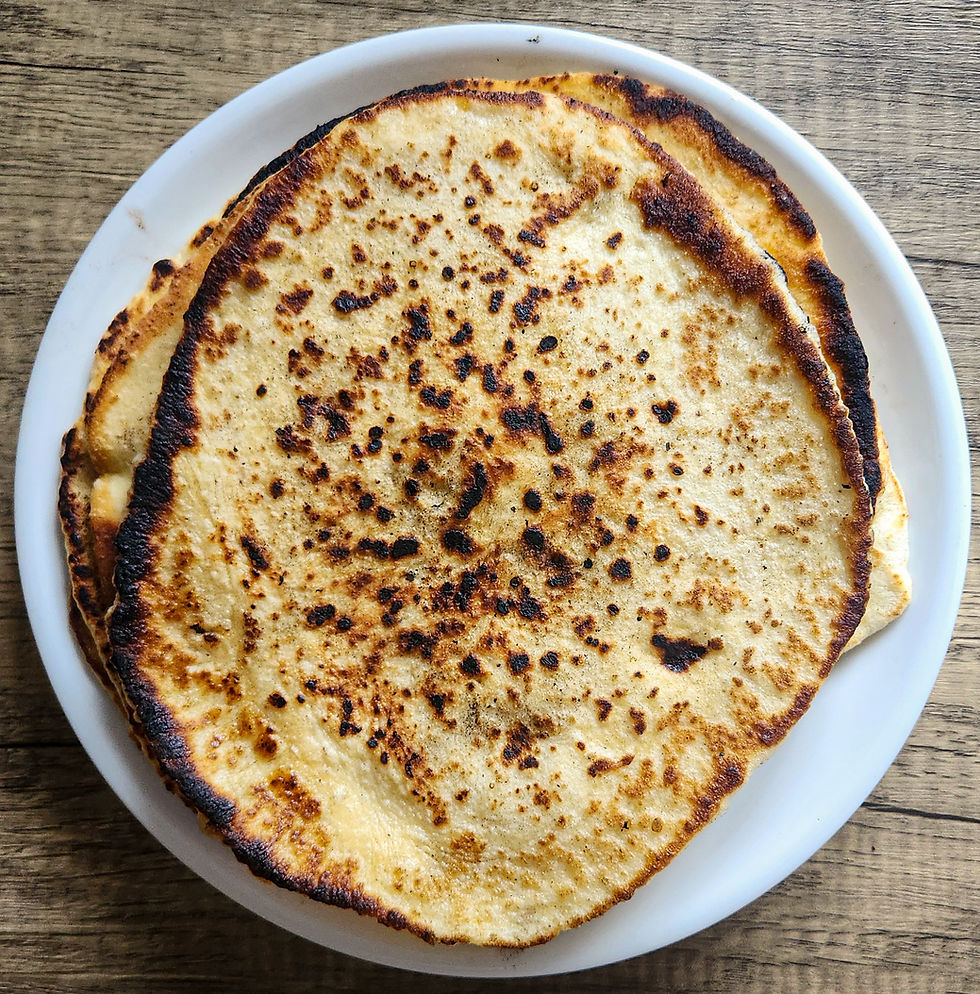Paska | Паска
- Daniel

- Apr 4, 2023
- 3 min read
Updated: May 20
I do not celebrate Easter (I am an atheist). But, this Easter bread has been popping up in my Ukraine-Russia cuisine research and Easter is just around the corner, I thought why not join in the fun this year?

Back in the olden days, the bread is proofed and baked in used cans. Panettone molds are the best substitute. You can also use tall pastry rings or cake molds. Respectfully, the "crown" is sliced off and the bread is sliced into wedges like a normal cake. Cheese and butter are typically used as a spread.

You can read all about the history of Paska and Kulich on Wiki. The name "Paska" literally means "Easter" while "Kulich" originated from the Greek word "Kollix" which means "a loaf of bread". The top of each loaf is called a "корона" (crown). It is usually topped with royal icing frosting (Russian) or braided bread (Ukrainian). The "spikes" created are vaguely reminiscent of Christ’s crown of thorns.
Here I wish all of you lovely people a Happy Easter!

Ingredients:
(Make four 4 inch loaves)
Unsalted Butter, 57g + More For Dipping & Greasing
Unbleached All Purpose Flour, 625g
Demerara Sugar, 67g
Sea Salt, 12g
Active Instant Dry Yeast, 2 1/4 TSP
Dried Fruits, 80g (I'm using dried currants)
Whole Milk, 245g
Water, 120g
Eggs Lightly Beaten, 2
Granulated Sugar, For Dipping
Egg Wash, For Brushing
High Quality Salted Butter Melted, For Brushing
Equipment:
Sauce Pot
Oven
4" Panettone Molds / Tall Pastry Ring or Cake Pan / Empty Tin Cans
Stand / Hand Mixer
Directions:
Prepare the Butter
In a saucepot, melt the butter.
Weigh the melted butter and top up with neutral oil if needed to reach 57g total.
Set aside to cool.
Mix the Dough
In a large bowl, combine flour, sugar, salt, yeast, and dried fruits.
Avoid direct contact between salt and yeast.
Create a well in the center and pour in milk, water, eggs, and melted butter.
Stir until the dough forms.
Knead and Rest
Knead inside the bowl for about 5 minutes until the dough is smooth and tacky, not sticky.
Adjust consistency with water or flour as needed, 1 tablespoon at a time.
Transfer to a lightly floured surface and knead another 5 minutes.
Dough should pass the windowpane test.
Cold Fermentation
Lightly butter a clean bowl and place the dough inside.
Cover with cling film and let ferment overnight in the fridge.
The next day, bring the dough to room temp for at least 3 hours.
Divide and Shape
Punch down to deflate and divide the dough into 4 equal pieces.
Roll each into a tight ball.
Optional: Freeze dough balls for up to 3 months. Thaw overnight in the fridge before using.
Prepare for Baking
Dip each dough ball in melted butter, then dredge in sugar.
Transfer into panettone molds and press down gently.
Cover with a towel and let rise for 1 to 2 hours, or until domed.
Bake the Buns
Preheat oven to 180°C (355°F).
Brush with egg wash and bake for 15 minutes, spraying with water every 5 minutes.
Rotate and continue baking for 10 more minutes, or until the tops are deep amber.
Finish and Serve
As soon as they come out of the oven, brush the buns with melted salted butter.
Let cool completely before slicing and serving.

Avery decent bread indeed...




Comments